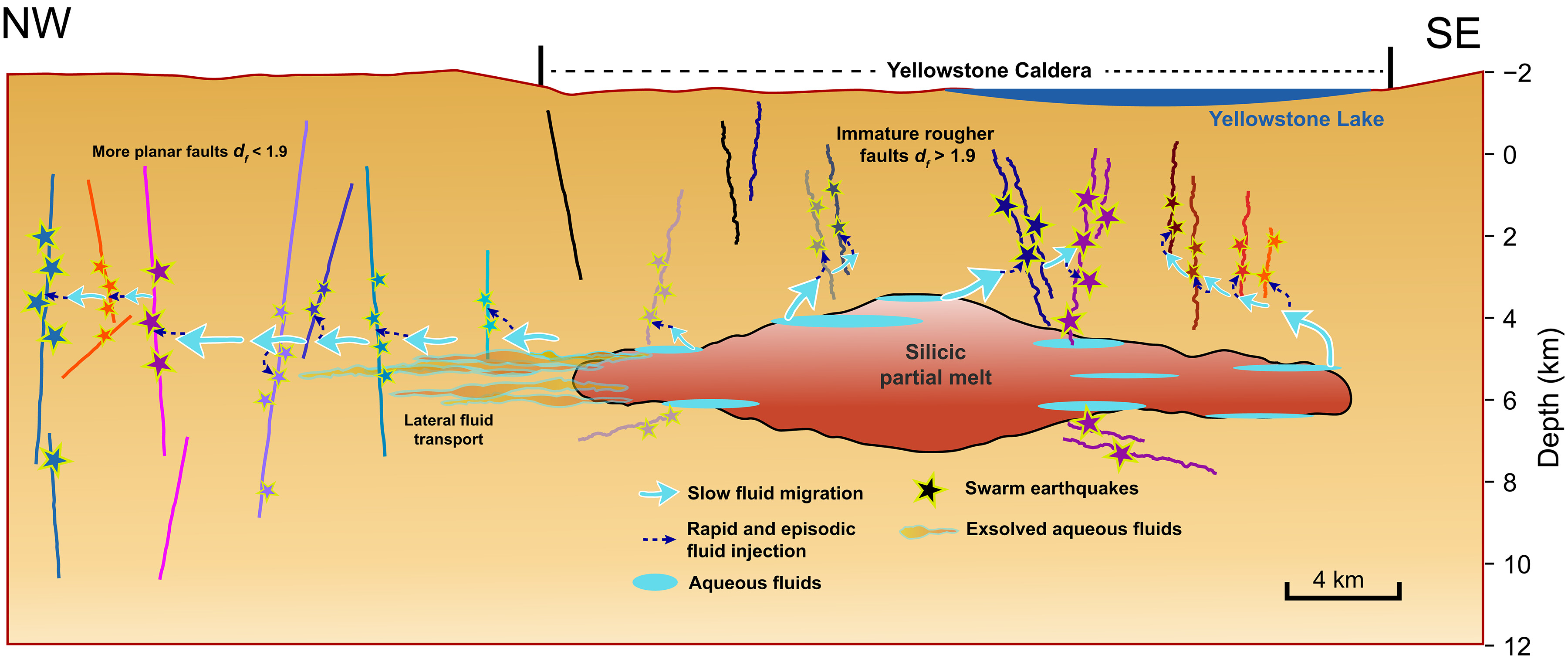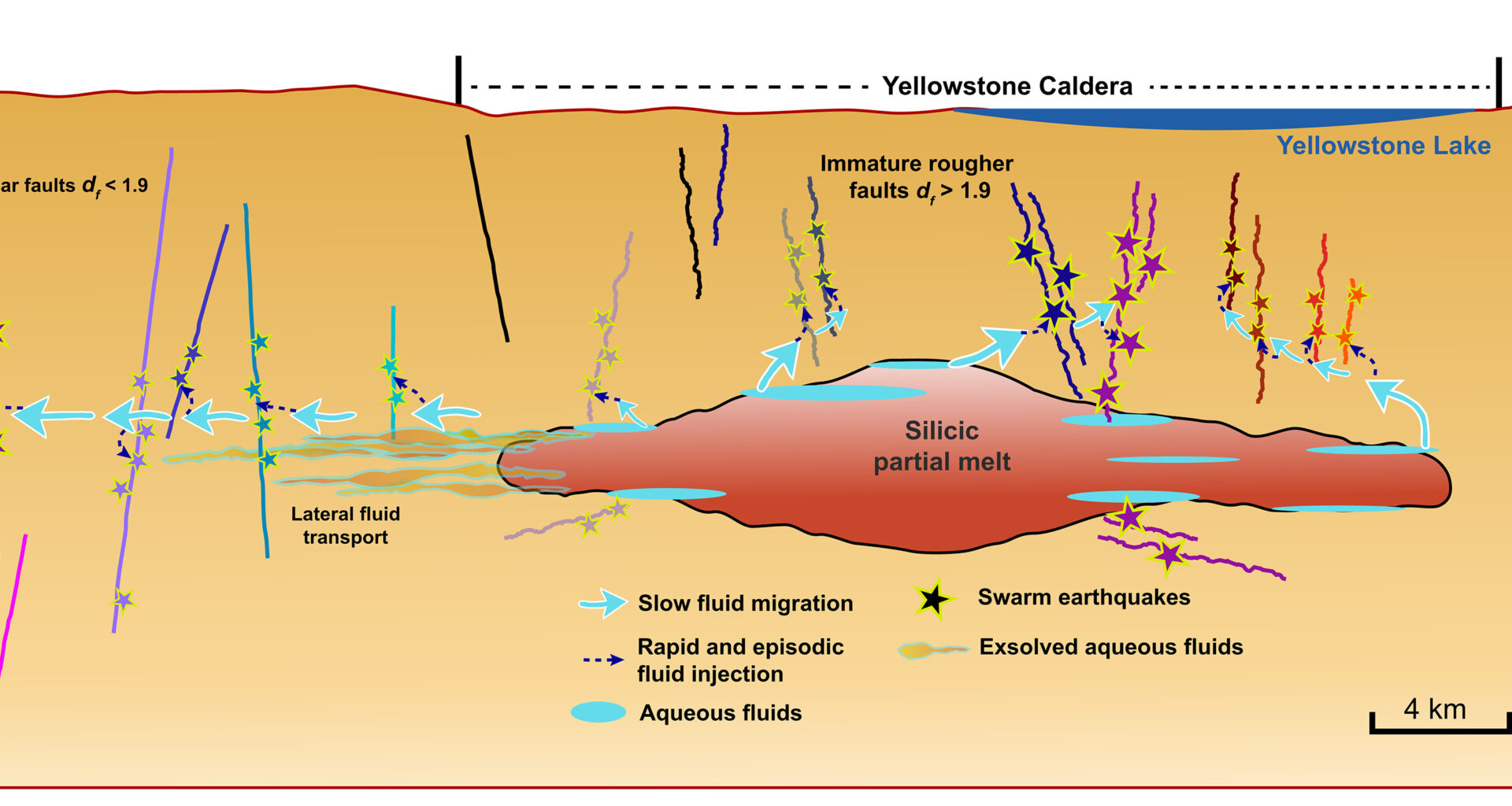Yellowstone was the first national park designated in the United States and is a popular tourist destination, but there is a lot going on underneath that people never feel.
A new analysis of 15 years of historical earthquake data from the Yellowstone caldera used machine learning and found an order of magnitude more seismic events than previously acknowledged.
A caldera is a large depression or hollow formed when a volcano erupts and the magma chamber beneath it empties, leading to the collapse of the land above. They are different than a volcanic crater, which is formed by outward blasting. The Yellowstone Park caldera is underneath parts of Wyoming, Idaho and Montana and is constantly monitored. The historical catalog for the Yellowstone caldera now shows 86,276 earthquakes spanning the years 2008 to 2022, significantly improving previous understanding of volcanic and seismic systems through better data collection and systematic analyses.

Graphic showing Yellowstone’s upper crustal magmatic system from northwest (NW) to southeast (SE). The interplay between slowly diffusing aqueous fluids and rapid episodic fluid injections into active faults control the occurrence of earthquake swarms. Faults are represented by different colored lines to indicate that they become active years after an adjacent fault has experienced a major episode of swarm-like activity, a pattern widely observed throughout the caldera region. Link: Florez, Li, et al.
A key finding in the study is that more than half of the earthquakes recorded in Yellowstone were part of earthquake swarms. Earthquake swarms are different than aftershocks, which are smaller earthquakes that follows a larger main shock in the same general area. Swarms are groups of small, interconnected earthquakes that spread and shift within a relatively small area over a relatively short period of time.
Prior to the application of machine learning, earthquakes were generally detected through manual inspection by trained experts. It takes time, government employees cost a lot, and is inefficient. Machine learning has sparked a data-mining gold rush in recent years since experts can ‘revisit’ the wealth of historical waveform data stored in datacenters across the world and learn more about current and previously unknown seismic regions around the world.
The roughness was measured by characterizing earthquakes as fractals, which are geometric shapes that exhibit self-similarity, meaning they appear similar at different scales. First visualized by Benoit Mandelbrot in 1980, fractal patterns are seen in coastlines, snowflakes, broccoli, and even the branching of blood vessels. The fractal-based models, targeting roughness versus regularity, were able to characterize these earthquake swarms, which the researchers believe were caused by the mix of slowly moving underground water and sudden bursts of fluid.
The study shows that earthquake swarms beneath the Yellowstone caldera have occurred along relatively immature, rougher fault structures, compared to more typical mature fault structures seen in regions such as southern California and even immediately outside the caldera.
“To a large extent, there is no systematic understanding of how one earthquake triggers another in a swarm. We can only indirectly measure space and time between events,” said University of Western Ontario engineering professor Bing Li “But now, we have a far more robust catalogue of seismic activity under the Yellowstone caldera, and we can apply statistical methods that help us quantify and find new swarms that we haven’t seen before, study them, and see what we can learn from them.”

